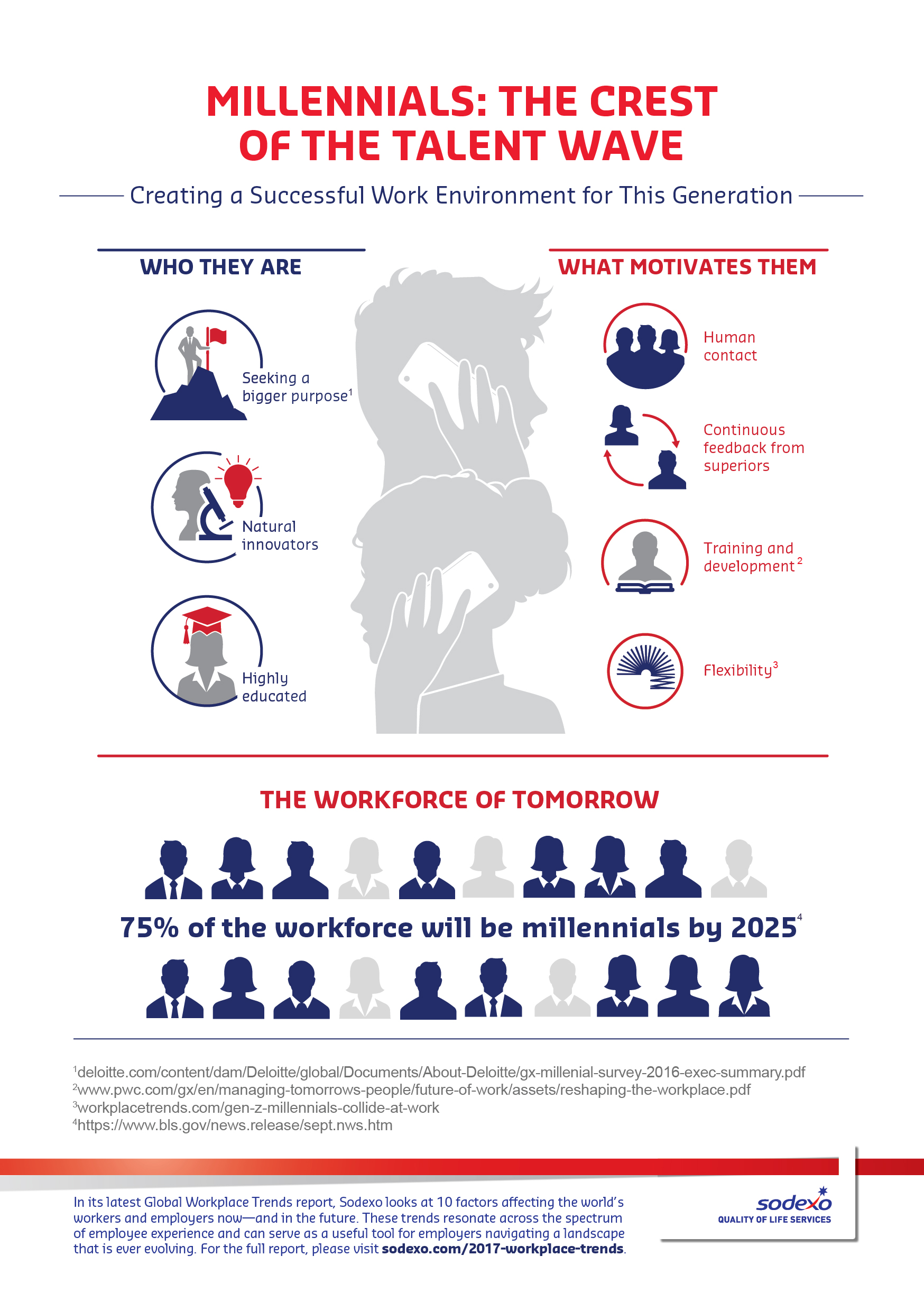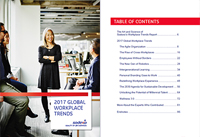Unlocking the potential of millennial talent
A new understanding of what drives this generation
NOW
To break the cycle of generational stereotyping and capitalize on the opportunities uniquely presented by the millennial generation, companies in emerging and developed nations alike are cultivating a new understanding of this cohort and why they matter. By creating a culture where millennials are engaged, employers are benefiting from the collaboration, creativity and authenticity that they bring to the table.
NEXT
Millennials now represent the largest share of the labor market — 32% — a number that will only grow over the next decade — in fact, it is estimated that by 2025, they will comprise 75% of the global workforce. When millennials and Gen Z employees across 10 global markets were quizzed in 2014, both generations chose health care coverage as the most important employee benefit. But by September 2016, when a follow-up study was conducted, their priority had shifted to work flexibility. Yet only 34% of companies now offer it.
By necessity, this will change: Corporations and enterprises will offer millennials the same freedom, flexibility and mobility they crave from startups — as well as providing leadership training earlier. Employers will also give millennials opportunities to put their entrepreneurial spirit to work, both within and outside the company. They won’t discourage millennial employees from taking the initiative on a new project, or even from having side jobs; this actually makes them more entrepreneurial (good for the company) and provides a sense of freedom (good for the employee).
To go further
About the 2017 Global Workplace Trends
Every year, Sodexo looks at the main factors affecting the world’s workers and employers now — and in the future. These trends resonate across the spectrum of employee experience and can serve as a useful tool for employers navigating a landscape that is ever evolving.
The 10 trends we explored this year

The agile organization: striking a balance between speed and stability
Organizations are seeking the holy grail of agility—speed plus stability—with an ultimate goal of responding to new conditions, all while keeping employees agile, too, with help from disciplines like mindfulness.

The rise of cross-workplaces: accelerating innovation through chance interactions
The newest iteration of collaborative work spaces takes co-working to a new level, with organizations not only sharing physical space and resources but also intentionally structuring interactions across boundaries to encourage problem-solving approaches that combine strengths to address complex issues.

Employees without borders: understanding the impact of migration on the workplace
The sheer spread and scale of the relocation of workers, in both emerging and developed economies, is driving new opportunities to demonstrate inclusive leadership by evaluating skill needs, availability, location benefits and effective cultural integration.

The new gen of robotics: how robots are transforming the way we work
Robots have been in the workplace for years, and advances in artificial intelligence have led to organizations increasingly using them for jobs that humans used to perform. The newest discussion: exploring the success of robots, especially as they collaborate with people on uniquely human jobs.

Intergenerational learning: a new model for talent development
As people continue to live and work longer, all workers are forcing companies to think differently about hierarchical and traditional employee learning. Employees of all generations are teaching one another from their own experiences and driving a new culture of personal development.

Personal branding goes to work: a powerful tool for employees and employers alike
Personal branding is taking on a new life and getting deeper scrutiny, as employers look to leverage the power of employees’ personal brands for the good of the company.

Redefining workplace experience: putting design thinking principles to work
From physical space and technology to virtual work considerations and amenities, the way workers experience their surroundings is key to a happy workforce. Design thinking can help optimize this experience so that it supports employees both within and outside of the workplace.

The 2030 agenda for sustainable development: reframing CSR through a shared vision and common purpose
The 2030 Sustainable Development Goals (SDGs) call on organizations to work together and with government toward a shared vision. The way businesses interpret and adapt practices will affect not only the progress toward meeting the SDGs but also the needs of a workforce hungry for positive change.

Unlocking the potential of millennial talent: a new understanding of what drives this generation
Why do we need to better understand millennials? Grasping the unique set of attributes that this generation brings to the work table gives us a view into the future of the workplace.

Wellness 3.0: the workplace as a wellness destination
Moving beyond “fixing” or preventing health problems, the current approach to wellness features the workplace as a potential catalyst for healthy living for employees, their families and the community at large.


